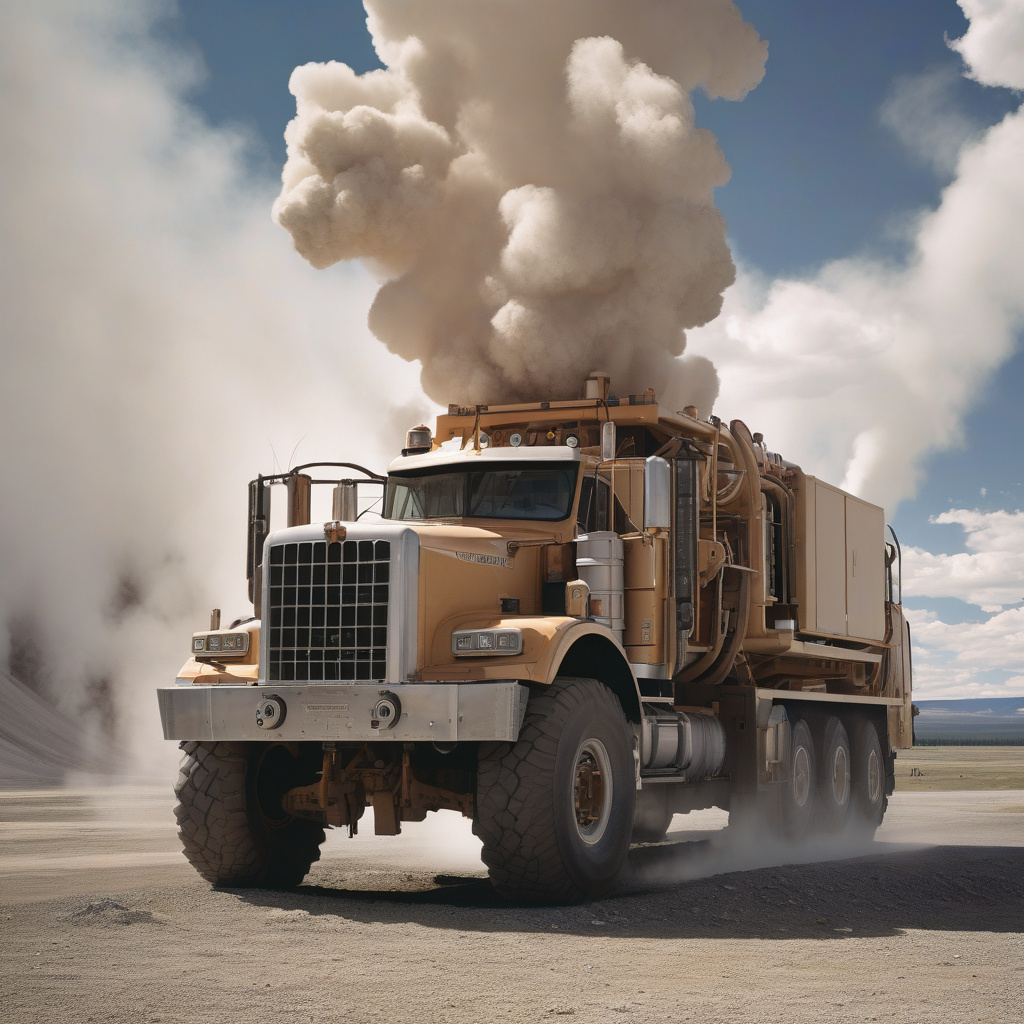53,000‑Pound Vibrator Truck Creates Mini Quakes to Scan Yellowstone’s Supervolcano
Scientists have finished a first‑of‑its‑kind seismic survey inside Yellowstone National Park, using a 53,000‑pound vibroseis truck to create mini quakes in order to scan the supervolcano. This innovative approach marks a significant step forward in understanding the geological processes beneath one of the world’s most famous national parks.
The use of a massive vibrator truck might sound like something out of a science fiction movie, but it is a real and crucial tool in the field of geology. By generating controlled seismic waves, scientists can map the subsurface structure of the Earth with unprecedented detail. In the case of Yellowstone, this technology allows researchers to peer beneath the surface and gain insights into the supervolcano’s complex network of magma chambers and faults.
The vibroseis truck operates by emitting low-frequency vibrations into the ground, which then bounce back and are recorded by sensors. By analyzing the data collected from these vibrations, scientists can create 3D images of the subsurface, much like a medical CT scan reveals the inner workings of the human body. This method provides a non-invasive way to study the Earth’s crust and can help identify potential geological hazards, such as volcanic eruptions or earthquakes.
Yellowstone National Park is a unique and geologically active region, home to geysers, hot springs, and the iconic Old Faithful. Beneath its stunning surface lies a supervolcano that has the potential to unleash catastrophic eruptions. Understanding the inner workings of this supervolcano is essential for predicting and preparing for any future volcanic activity.
The recent seismic survey conducted in Yellowstone is part of ongoing research efforts to monitor the supervolcano and assess the risks it poses. By combining traditional geological fieldwork with cutting-edge technology, scientists can paint a more comprehensive picture of the subsurface dynamics and improve their ability to forecast potential volcanic events.
In addition to its scientific importance, the use of the vibroseis truck showcases the innovative spirit driving geoscience research forward. By pushing the boundaries of technology and exploration, researchers can uncover new insights and make breakthrough discoveries. The marriage of engineering and geology exemplified by the vibrator truck highlights the interdisciplinary nature of modern scientific endeavors.
As we look to the future, advancements in seismic imaging techniques will continue to revolutionize our understanding of the Earth’s subsurface. From monitoring volcanic activity to mapping underground water resources, the applications of vibroseis technology are vast and promising. By harnessing the power of mini quakes and sophisticated imaging tools, scientists are paving the way for a deeper comprehension of the planet we call home.
In conclusion, the use of a 53,000‑pound vibrator truck to scan Yellowstone’s supervolcano represents a groundbreaking achievement in geoscience research. Through the generation of mini quakes and advanced seismic imaging, scientists can unravel the mysteries hidden beneath the surface of one of the world’s most enigmatic geological wonders. This innovative approach not only enhances our understanding of Yellowstone’s supervolcano but also showcases the remarkable synergy between technology and earth sciences.
Yellowstone, Supervolcano, SeismicSurvey, Geoscience, Innovation












